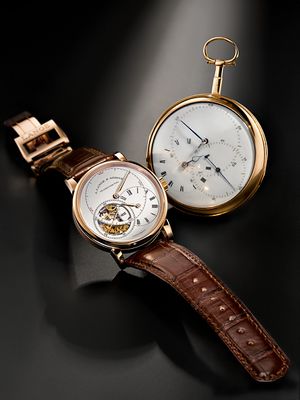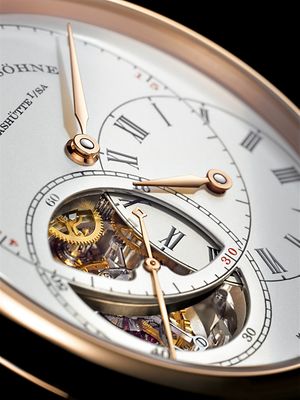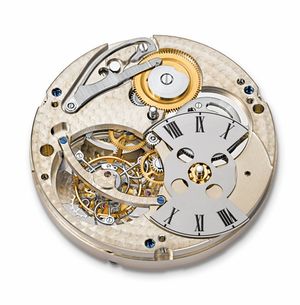Precision above all: the RICHARD LANGE TOURBILLON “Pour le Mérite”
Precision above all: the RICHARD LANGE TOURBILLON “Pour le Mérite”
| other languages: de en es fr it ru |



Glashütte, January 2011
The fourth A. Lange & Söhne timepiece honoured with the distinction “Pour le Mérite” embodies a fusée-and-chain transmission as well as a tourbillon with a patented stopseconds mechanism. The underlying purpose shared by both of these grand complications is to improve rate stability and precision. The prominent regulator dial with its fascinating pivoting segment was inspired by a famous historic paragon.
There is hardly another watchmaker who can take more credit for the advancement of precision horology in Saxony than Johann Heinrich Seyffert (1751-1817). At the royal court and among scientists, his timepieces were immensely popular. His design concepts influenced the most talented artisans of his guild, elevating the art of horology in Dresden to new heights. In 1845, this trend culminated in the establishment of the first German watch manufactory by Ferdinand A. Lange. The circle of prestigious buyers of Seyffert’s fewer than one hundred exquisite timepieces also included the famous explorer and naturalist Alexander von Humboldt. For his expedition to South America, he acquired a Seyffert chronometer and took the time in 1797 to travel to Dresden expressly to learn the art of navigation with a sextant and barometer. According to Humboldt’s notes, Seyffert’s chronometer was accurate to four or five seconds a day and when stationary, its rate accuracy even improved to less than one second in 24 hours. Even today, two hundred years later, this degree of precision is nothing short of impressive.^
The regulator he crafted in 1807 is a particularly attractive exemplar. It is now part of the collection of the Mathematics and Physics Salon in Dresden. Its dial features three intersecting circles for the time indications. In its calibre, a fusée-and-chain mechanism is responsible for the constant transmission of power. This watch, with the serial number 93, was the blueprint for the RICHARD LANGE TOURBILLON “Pour le Mérite”. It reflects Seyffert’s quest for horological perfection in a contemporary interpretation as an exclusive regulator for the wrist, dedicated totally to mechanical precision. The overlapping circles of the off-centre dials are what first meet the eyes of connoisseurs who study the face of the RICHARD LANGE TOURBILLON “Pour le Mérite”: the large minute circle at the top is the dominant element that hovers over the slightly smaller subdials for the seconds and hours to the left and right of the vertical centre axis. The dial layout has its origins in the precision regulators that since the 18th century were used for calibration by timekeeping services and observatories but also by manufactories for synchronising new watches. To prevent any confusion of the hour and minute hands under sometimes less than ideal light conditions, they were positioned on different axes of the dial.